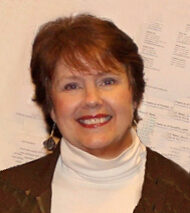
Nancy Huntting , Aesthetic Realism consultant, writes:
The new issue of TRO, “Authentic Criticism,” is thrilling about both literary criticism and criticism in life itself. You’ll learn how important, kind, and beautiful true criticism is—and also what in us interferes with our hope to see accurately ourselves and other people and things. Some of the greatest critics ever are present in this issue, including the English writer William Hazlitt, whom Eli Siegel is looking at powerfully and deeply. Knowledge you and humanity are hoping for is in this latest issue of The Right of Aesthetic Realism to Be Known.
The commentary by Ellen Reiss begins:
Dear Unknown Friends:
We are serializing a truly landmark lecture. It is by Eli Siegel and titled Hazlitt Tells of Criticism. It took place on August 12, 1970.
The word criticism in the title refers centrally, but not only, to literary criticism. And the chief reason I say “not only” is: Aesthetic Realism shows that we are all constant critics of the world and ourselves. We’re always asking—mostly without articulating it—how good or not good something is. And this something can be as diverse as the meal we just ate, a colleague who didn’t smile at us, the décor of a room, a decision we made yesterday and are unsure of now.
Mr. Siegel gave the following informal definition: a true critic is one who “makes a good thing look good, a bad thing look bad, and a middling thing look middling.” Without knowing it, there’s nothing we long for more than to be true critics of ourselves and the world. Through Aesthetic Realism we can be that increasingly, and with great happiness.
Criticism & the Forces in Us
William Hazlitt, English essayist and critic, lived from 1778 to 1830, and early in this lecture Mr. Siegel said: Hazlitt’s “life and all his writings taken together show what criticism is.” In the present section, Mr. Siegel continues giving careful, lively, rich, deep, humorous evidence for that statement….Read more